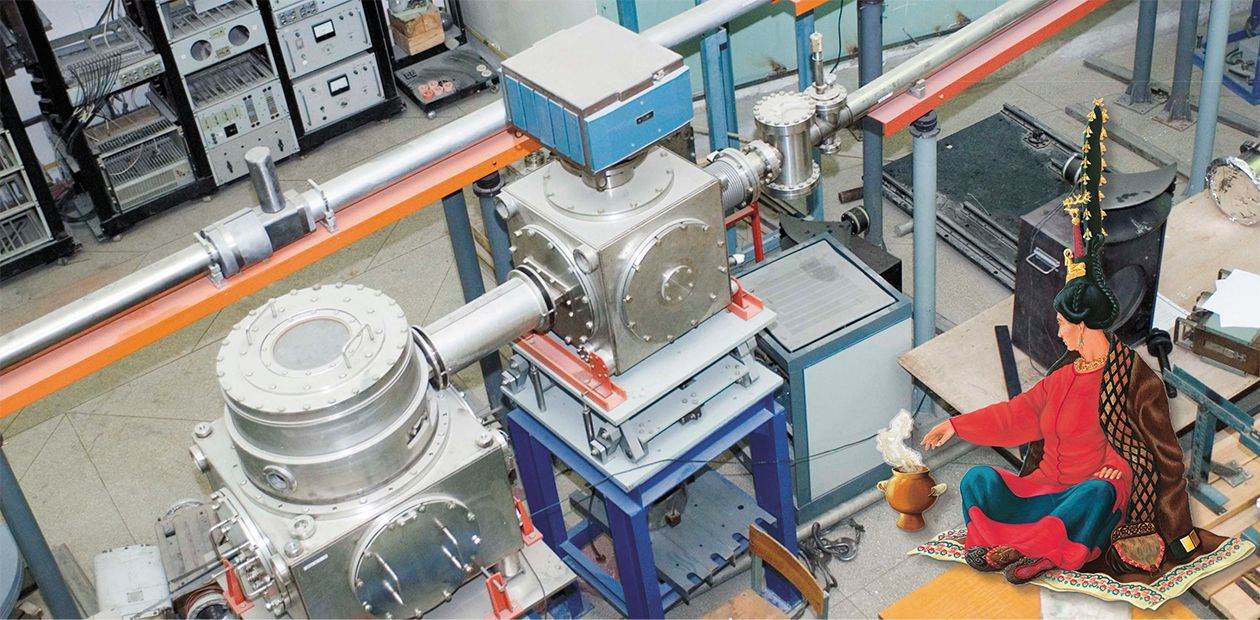Master SR
If you ask, “What color is an electron?”, this is a jest, but there is a great deal of truth in it: The light emitted by electrons (and even by a single electron) circulating in the accelerator storage ring was seen by many, and they can even describe its color…
Here we are dealing with the so-called synchrotron radiation (SR) whose high-power sources are beams of charged particles moving in the magnetic field with relativistic velocities. Unique properties of SR are a wide spectral range, high power, high brightness of sources, and natural polarization. Owing to these properties, SR is used to solve various fundamental and applied problems.
Today there are more than 60 SR centers in the world. In recent years, they are among the main suppliers of new scientific information in biology, surface physics, solid-state physics, and material science. In addition, they serve as a basis for the development of new unique technologies.
As early as the first colliders were created at INP, A. N. Skrinsky proposed to use SR for biological and chemical investigations. Twenty special channels to transfer synchrotron radiation to experimental stations were constructed on VEPP-3 and VEPP-4M accelerators. Here, the Siberian Synchrotron Research Center has been successfully functioning for more than 25 years. This is, in essence, an interdisciplinary institution where scientists of various specializations not only from the Siberian Branch, but also from other Russian and foreign cities are working.
1981
Creation of the Siberian Synchrotron Radiation Center
A lot of pioneering works have been performed in the Center, including the investigation of high-speed (shock-wave and detonation) processes and paleoclimate as well as obtaining of complex mechanical microstructures from polymers, metals, and ceramics with the help of deep X-ray lithography, galvanics, etc.
“Diamond” result
When you are watching a Great Patriotic War newsreel, you do not know that one-fifth of the black smoke after a trotyl shell explosion consists of burning nanodiamonds. If explosions took place in vacuum, the diamonds formed would remain intact.
Thus, where are diamonds formed at explosions of some explosives and what is the mechanism of their formation? This is a small share of questions raised by researchers working at a number of institutes of the Siberian Branch of the Russian Academy of Sciences, who constructed a unique facility in the SR Center. The full name of the facility is “Experimental SR Station to Investigate Extreme States of Matter”. However, postgraduates call this facility simply “Explosion.” Academician V.M. Titov is the supervisor of these works.
G. N. KULIPANOV ,academician of the Russian Academy of Sciences, Deputy director of the Institute of Nuclear Physics SB RAS, one of the organizers and Director of the Siberian Synchrotron Radiation Center
Undoubtedly, now facilities such as synchrotron radiation sources, neutron sources, free electron lasers, space and ground-based astrophysical facilities, as well as superhigh-power pulsed lasers, are a basis for the development of many sciences: physics, biology, chemistry, geology, and technologies. They form a foundation for the development of modern science. The scientific community should realize that when Russian science starts getting financing, ”the cake should not be sliced equally for all”. Resources should be concentrated on key directions on which the development of many sciences depend.
Unfortunately, Russia has missed the moment for the creation of new synchrotron radiation sources. However, we are thinking of even more advanced facilities of the next generation. These are the so-called accelerators-recuperators. Our concept, first presented at a Japan conference at the end of the past century, is so popular that it can form a basis of the fourth generation of synchrotron radiation sources.
One can say that the facility is an explosion chamber connected with a camera, differing in a much higher shooting velocity, which is million times higher than that of a conventional camera, and this camera operates in the X-ray rather than the visible spectral range. Thus, it produces X-ray films.
An extremely high velocity at which such a film is produced allows one to investigate fast processes that take place inside explosives during an explosion. They include the combustion-detonation transition process and the formation of a detonation wave at the initiation of explosives; the detonation front motion; the generation and growth of nanodiamonds in the chemical reaction zone of the detonation front and in the zone of scatter of the detonation products.
The facility created in Siberia has no analogs. This will allow Russian scientists to obtain new results and become ”monopolists” in this research field.














